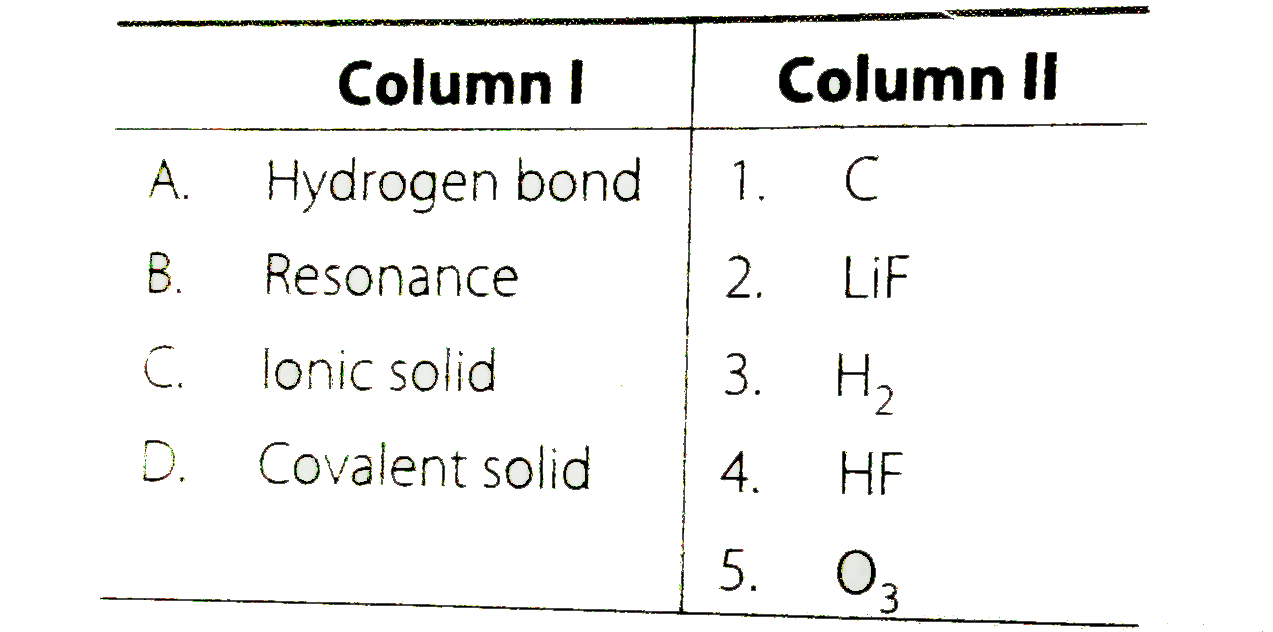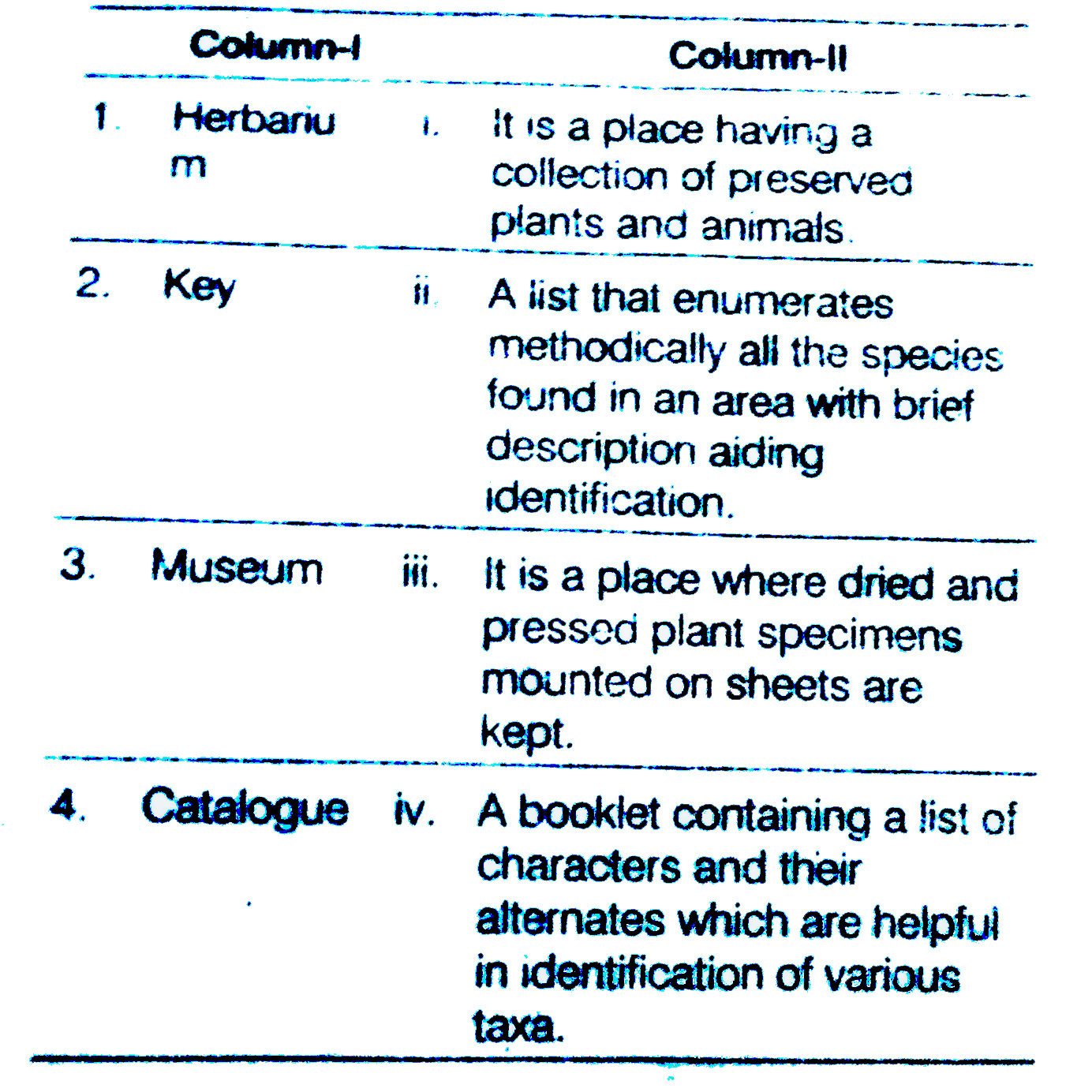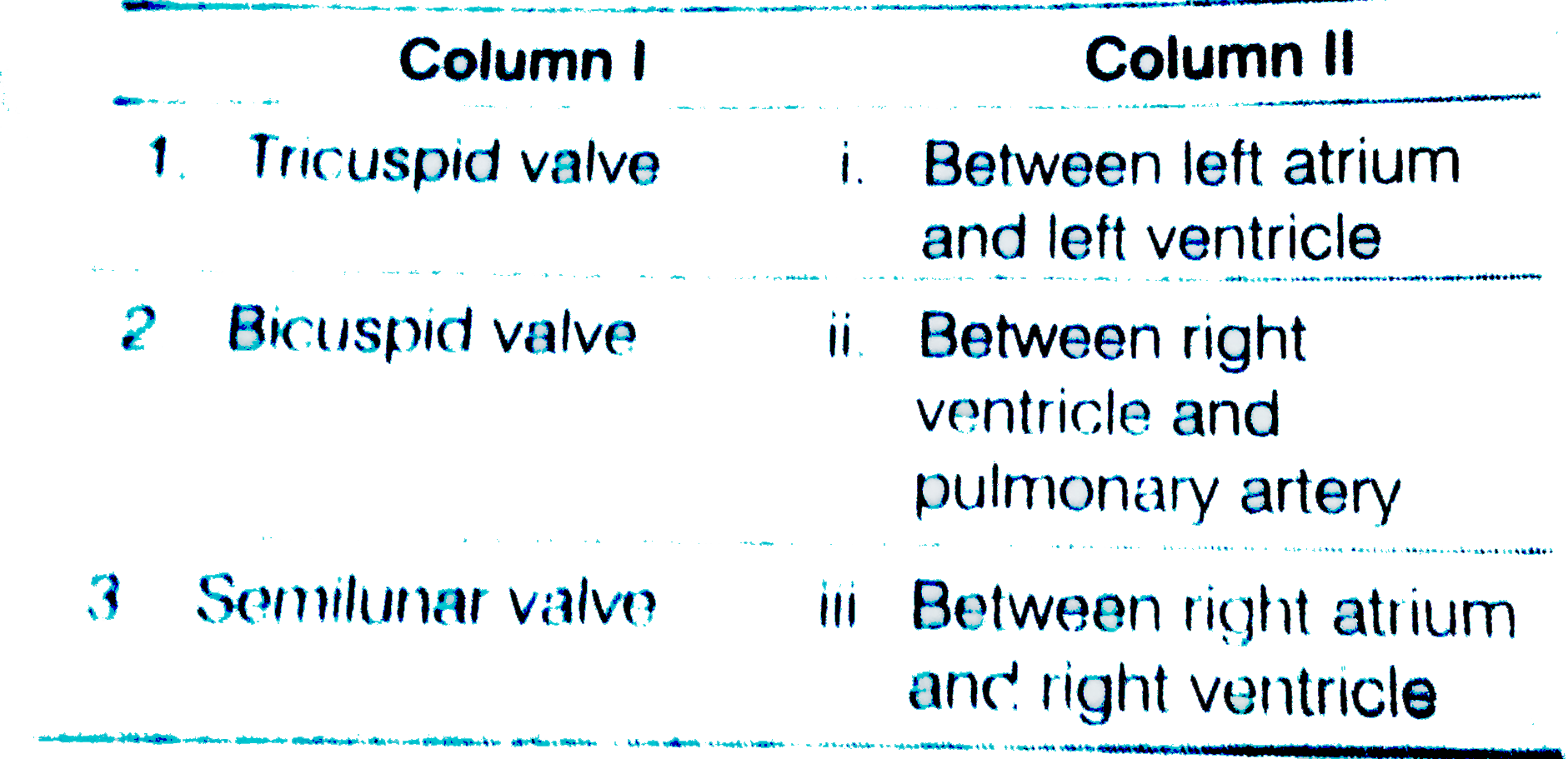Match the items given in Column I and Column II.
Column IColumn IIA.Protective colloid1.FeCl3+NaOHB.Liquid-liquid colloid2.Lyophilic colloidsC.Positively charged colloid3.EmulsionD.Negatively charged colloid4.FeCl3+hot water
The correct Answer is:A.→(2) B.→(3) C.→(4) D.→(1)
To solve the matching question between Column I and Column II, we will analyze each item in Column I and find the appropriate match from Column II based on the properties of colloids.
1. Identify Protective Colloid (A):
- Protective colloids are typically lyophilic colloids that stabilize lyophobic colloids.
- They form a protective layer around the lyophobic particles.
- Match: A (Protective colloid) → 2 (Lyophilic colloids).
2. Identify Liquid-Liquid Colloid (B):
- Liquid-liquid colloids are formed when one liquid is dispersed in another immiscible liquid, creating an emulsion.
- Match: B (Liquid-liquid colloid) → 3 (Emulsion).
3. Identify Positively Charged Colloid (C):
- When FeCl3 is added to hot water, it forms a positively charged colloid due to the presence of Fe3+ ions.
- This results in the formation of hydrated ferric oxide, which is positively charged.
- Match: C (Positively charged colloid) → 4 (FeCl3 + hot water).
4. Identify Negatively Charged Colloid (D):
- When FeCl3 is mixed with NaOH, a negatively charged colloid is formed due to the absorption of OH- ions.
- Match: D (Negatively charged colloid) → 1 (FeCl3 + NaOH).
Final Matches:
- A → 2 (Protective colloid → Lyophilic colloids)
- B → 3 (Liquid-liquid colloid → Emulsion)
- C → 4 (Positively charged colloid → FeCl3 + hot water)
- D → 1 (Negatively charged colloid → FeCl3 + NaOH)
Summary of Matches:
- A: 2
- B: 3
- C: 4
- D: 1
---
- Protective colloids are typically lyophilic colloids that stabilize lyophobic colloids.
- They form a protective layer around the lyophobic particles.
- Match: A (Protective colloid) → 2 (Lyophilic colloids).
- Liquid-liquid colloids are formed when one liquid is dispersed in another immiscible liquid, creating an emulsion.
- Match: B (Liquid-liquid colloid) → 3 (Emulsion).
- When FeCl3 is added to hot water, it forms a positively charged colloid due to the presence of Fe3+ ions.
- This results in the formation of hydrated ferric oxide, which is positively charged.
- Match: C (Positively charged colloid) → 4 (FeCl3 + hot water).
- When FeCl3 is mixed with NaOH, a negatively charged colloid is formed due to the absorption of OH- ions.
- Match: D (Negatively charged colloid) → 1 (FeCl3 + NaOH).
- A → 2 (Protective colloid → Lyophilic colloids)
- B → 3 (Liquid-liquid colloid → Emulsion)
- C → 4 (Positively charged colloid → FeCl3 + hot water)
- D → 1 (Negatively charged colloid → FeCl3 + NaOH)
- A: 2
- B: 3
- C: 4
- D: 1
Topper's Solved these Questions
- BOOK - NCERT EXEMPLAR ENGLISHCHAPTER - SURFACE CHEMISTRYEXERCISE - Assertion and Reason5videos
SURFACE CHEMISTRY
- BOOK - NCERT EXEMPLAR ENGLISHCHAPTER - SURFACE CHEMISTRYEXERCISE - Long Answer Type Questions4videos
SURFACE CHEMISTRY
- BOOK - NCERT EXEMPLAR ENGLISHCHAPTER - SURFACE CHEMISTRYEXERCISE - Short Answer Type Qrestions29videos
SURFACE CHEMISTRY
- BOOK - NCERT EXEMPLAR ENGLISHCHAPTER - SOLUTIONS EXERCISE - LONG ANSWER TYPE QUESTIONS8videos
SOLUTIONS
Similar Questions
Match the items given in column i with example given in Column II
 View Solution
View SolutionMatch the items in column I with those given in column II.
 View Solution
View Solutionmatch the items given in column I with the items given in column II.
 View Solution
View Solutionmatch the items given in column I with the items given in column II.
 View Solution
View SolutionMatch the soaps given in Column I with items given in column II.
 View Solution
View SolutionMatch the types of colloidal systems given in Column I with the name given in Column II.
Column IColumn IIA.Solid in liquid1.FoamB.Liquid in solid 2.SolC.Liquid in liquid 3.GelD.Gas in liquid4.EmulsionView SolutionMatch the items given in Column I with those in Column II and select the correct option given below
 View Solution
View SolutionMatch the items given in Column I with those in Column II and select the correct option given below
 View Solution
View SolutionMatch the items given in Column I with those in Column II and select the correct option given below
 View Solution
View SolutionMatch the refining methods (Column I) with (Column II).
 View Solution
View Solution

